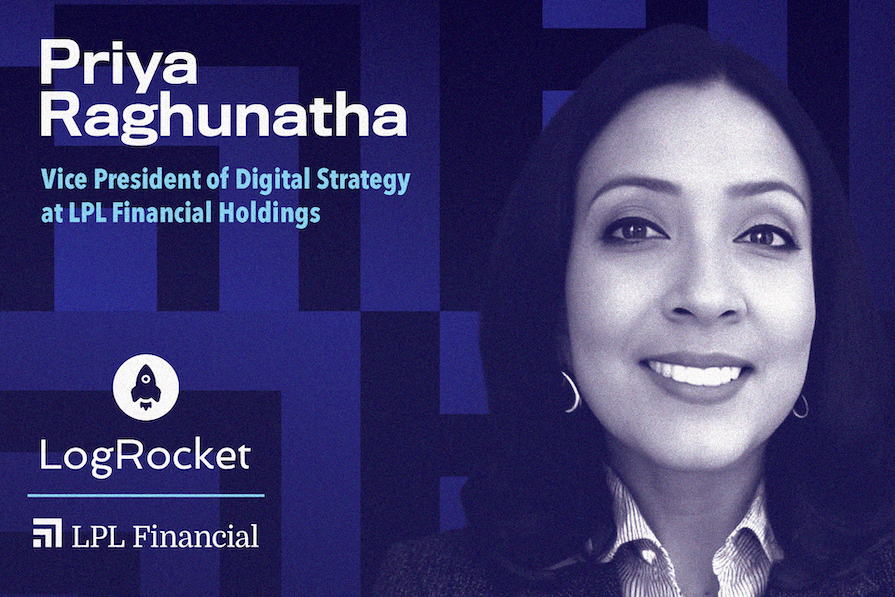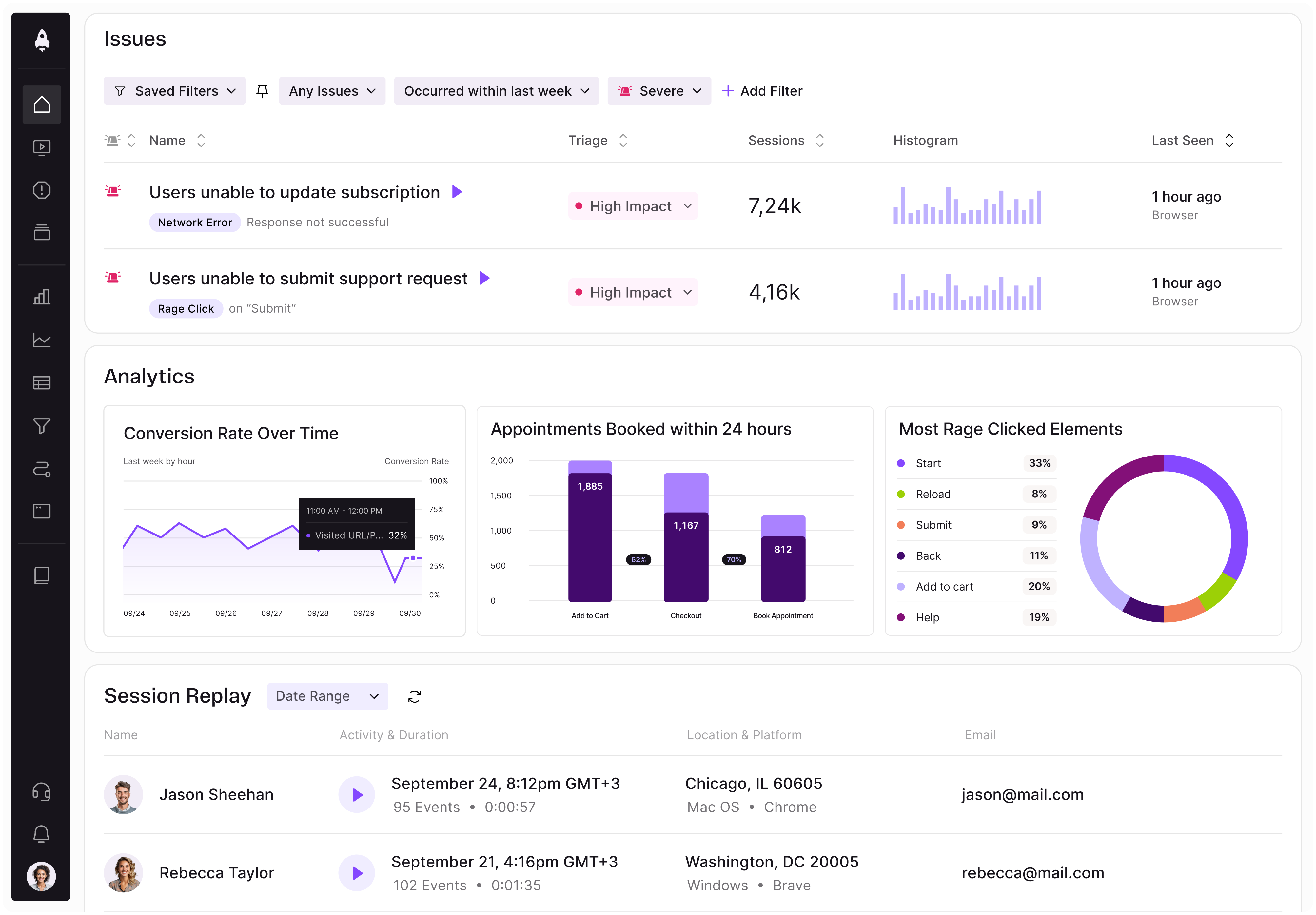Priya Raghunatha is Vice President of Digital Strategy at LPL Financial, a retail financial advising company. She started her career as a business analyst at Office Depot and Affinion Group before joining Prudential Financial as a senior business process specialist. From there, Priya transitioned to the Knights of Columbus, where she led the life insurance product lifecycle and, later, sales and agent services. Before LPL Financial, she held various leadership roles at Covr Financial Technologies and Marsh.

In our conversation, Priya shares her perspective on digital strategy and the two lenses it encompasses: data-driven and perception-driven. She also talks about her passion for mentorship and how she hopes to pave the way for the younger generation of students and professionals. She discusses how she strives to expand her influence, especially as a woman in the workforce, and how she works to create a seat at the table.
Strategies are always shaped by our experiences and what has worked for us in the past. I’ve become a firm believer that the fundamental principle for any successful strategy is to understand the goals of the organization. If you don’t understand why you are doing something, your strategy could be the best in the world, but it won’t matter. It’s also important to understand who you are trying to solve the problem or build the opportunity for. What may work for one customer segment may not work for another.
In general, I look at digital strategy through two lenses: one is more tangible and data-driven and the other is softer and more perception-driven. For the data-driven lens, goals matter. If the organization is trying to, say, grow the business, the strategy will be very different than if the org is trying to expand into a new area of the business. Once you understand the goals, you can build a cohesive strategy aligned to that. Some other tangible factors play into strategy as well, such as the availability of resources.
When you go into that other, softer perception-driven lens, the most important thing is the way customers view your organization. Are you trying to build a brand or are you trying to build loyalty? Are you a cutting-edge tech company — always looking for the next thing on the horizon — or are you a business looking to consume this tech? That cultural piece drives your strategy too.
Last but not least (and certainly this is an underrated factor) is the risk tolerance of your company. The financial services industry, where LPL operates, is highly regulated. Most of the companies are not going to be “high risk, high reward.” Strategy must be tempered with risk and compliance needs, whereas org in other industries might have room to be more creative.
Yes, and this ties into how to measure the success of your strategy overall. If you are talking about the softer perception-driven lens, then you don’t have hard metrics, but you can see results in the kind of experiences your customers share. This comes down to getting good feedback. Do you see many repeat customers or do you get more revolving door type customers?
Do you see a lot of business coming to you from your competition? If so, that conveys that your brand and perception are much better than what the market offers. While those perception lenses do not have numbers behind them, if you put the right mechanisms in place, you can absolutely measure them.
There’s a plethora of metrics to populate your dashboards. It all comes back to the north star you use to measure success. If you’re trying to grow the business, you’re looking for more customers to join and to gain more revenue. If you’re looking to expand into newer areas, you’re measuring how successful your engagement strategy is. Everything ties back to the driver for your strategy and, based on those, the north star metric to measure success.
I’ve had the luxury of sitting on both sides of the aisle in the insurance and financial services industry — I’ve been the tech company that’s leading innovation and selling technical tools, and have also been in the business, trying to help customers solve the problem of making more money or closing more business.
One commonality that stood out to me is that you need to have cultural buy-in from the top to embrace digital transformation. If you don’t have that, it can’t percolate downstream. People often get stuck doing things the way they’ve always done in the past — there’s often a huge resistance to change. You can put the best tools and technology in front of some folks, but they won’t embrace it.
I had a situation where I had to talk to an advisor who was making millions in commissions. His work was all paper-driven – he had an army of people entering the data into Excel for him. We had to sell him the solution a little differently. We said, “We are not looking to grow your business because you seem to be doing great there, but we can make your business more profitable if you start using our product. We can help you expand to newer segments.”
Of course, we’re dealing with other challenges in insurance and financial services as well. It’s an older, regulated industry. We have legacy systems that are not easy to integrate with and don’t have structured standardized data that we can leverage. We need a lot of customizations, and every time we want to improve a digital experience, we have to make sure it’s compliant. We can’t just build whatever we want — we have to balance between our compliance and regulation needs versus what the ideal experience might be.
I’ve been fortunate to have a network of mentors who have shown me the ropes and guided me along my journey, which is also what I hope to do for others. I once came across a quote that talked about how knocking down barriers is not just about getting to the top and feeling validated, but is also about clearing and paving the path for others who come after you so they don’t encounter the same obstacles. They may have to knock down other barriers, but at least you’ve made their path a little easier. That has stuck with me.
I’ve had the opportunity to coach high school kids through a local program that provides guidance to low-income and/or first generation high school juniors and seniors. A while back, I noticed a student lingering in the back of the room after a session. So, I slowed down and waited for him to approach me. He told me that he felt a lot of pressure to fit in culturally. He said, “I feel like a completely different persona at school and at home — I have to balance both sides.”
He was frustrated that his parents and family didn’t understand how difficult school was for him. Considering I have high school kids myself, I wanted to help him better understand his parents’ point of view. They were investing so much in their child’s education that they were putting pressure on him without realizing it. I said, “Instead of shutting the door on them or getting angry, explain how you feel. Help them understand what you are going through.”
I shared that dealing with a cultural balance is something that I experienced and that my kids experienced as well. I suggested that he try to get it to a point where it doesn’t affect him and where he can acknowledge that both of these sides of him are important. This was the most gratifying conversation I’ve had with a student. Through this program, I continue to walk away with a different perception of what kids go through today.
Even if we try not to, we all have some kind of subconscious bias — we often just don’t recognize it. Professionally, I come from a tech background, but I transitioned into business strategy early in my career because I found I enjoyed it more. Often, tech has a lot more representation from Asians and other communities, whereas the business side is generally Caucasian-dominated. I’ve often been in meetings where people assume I’m a tech expert and don’t think I can speak to business strategy.
I’ve built a voice and confidence over the years, and now, I raise my hand and say, “Listen, I can speak intelligently on that topic, but I’m not the expert. This is what I bring to the table and here’s where I can add value.” The most important way to break that myth and bias is to explain what value you bring, even if that means you are put in an uncomfortable situation where you don’t have a seat at the table.
I find that if you think you can speak intelligently about something, then raise your hand and try to. There’s also no shame in asking for help by saying, “I don’t know. Help me understand this. Explain this to me.” It’s a little harder if you’re from a place where asking for help is looked down on, so I always try to be open and approachable.
It comes with experience to realize that you are not just looking to be the recipient of mentoring but also to be the mentor. We’ve all heard Gandhi’s famous quote “Be the change that you want to see.” Not everybody can change at a higher level, so I look at what I can change within my sphere of influence. Then, at a much broader level, how can I engage? Within my own sphere of influence at work, I strive to be open to diverse or conflicting opinions, even if they don’t align with mine. This creates a more inclusive and equitable work culture.
Often, people from underrepresented groups have high potential and ideas, but they’re not comfortable speaking up in a group setting. It’s important to give them the opportunity, get them comfortable, and coach them to be more vocal. That’s definitely something I can influence from my own sphere.
Further, be as open and approachable as possible, so different people will share their thoughts and ideas with you because even if they don’t have that influence, you can bring your influence to guide them and nurture that inclusivity in your conversations. From an industry standpoint, go to events to network and put yourself out there. This can help further expand your influence, even if you don’t realize it.
Last but not least, as I hire my own teammates, I have encountered my own biases. I work through them to ask myself, “Is it my bias or do I think this person can actually do the job?” There are both small and big things you can do, but it’s all about doing it consistently and bringing more people around you to do it.
This is one of my passion topics. While talking with a women’s cohort that I am part of, I learned about a 2024 McKinsey study that revealed it’s going to take another 50 years for women to get gender parity in terms of pay. Right now, women make up only 29 percent of C-suite or executive roles, and women of color make up just 15–18 percent of those roles. And only 2 percent of startup founders are women. I have an 18-year-old daughter — my daughter and future granddaughters are probably going to retire before they even see gender parity.
As women, despite how much we toot our horns or how successful we are, we still have to work much harder than our male counterparts to either get a certain position or to get funding. That’s the stark reality of the world we live in. So what does that mean for us? Progress has been made, but it’s still fragile and very slow. So, how do we keep up the momentum or even accelerate it?
I think that we have to be honest and look at it both ways. One, as women, we have to look at our own mindset. Are we selling ourselves short? Are we letting our own limiting beliefs and thoughts keep us behind that wall? We need to put ourselves in uncomfortable situations and volunteer for those stretch assignments or goals, even if we’re nervous about failing or looking bad. That’s what our male counterparts do. We need to do the same things if we are asking for gender parity and equal opportunities.
We’ve talked a lot about networking and mentoring — lean in on women who have broken the barriers. They can help guide us. We have to get out, network, and build connections. Lastly, we tend to put ourselves last relative to our work and families. Make a commitment to invest in yourself — mentally, spiritually, physically, and professionally.
First, they need to start giving equal opportunities to women and paying them as much as men. I noticed that a lot of companies have ERGs and programs associated with women and people of color. Even within that, I see a bias. Is there a resource group for South Asian women? Let’s be a little bit more targeted in our initiatives and more mindful of all populations of women.
Further, I think that educating our leaders on their own biases is also important. I was once the only woman of color on a business panel with all women leaders. A kid came up to me after to say, “This is what I want to do. Seeing you there gives me hope that I can be there one day.” That’s what made me realize how important it is to see people like yourself at different tiers of management. Organizations have to invest more in leadership diversity so that more people can be inspired to follow them.

LogRocket identifies friction points in the user experience so you can make informed decisions about product and design changes that must happen to hit your goals.
With LogRocket, you can understand the scope of the issues affecting your product and prioritize the changes that need to be made. LogRocket simplifies workflows by allowing Engineering, Product, UX, and Design teams to work from the same data as you, eliminating any confusion about what needs to be done.
Get your teams on the same page — try LogRocket today.

A practical framework for PMs to use AI in ideation without sacrificing judgment, strategy, or decision quality.

A practical five minute revenue estimation method to help product managers compare ideas, drop low impact features, and prioritize smarter.

A practical guide for PMs who want to stop being bottlenecks, delegate smarter, and lead teams effectively with a clear ownership framework.

Stop letting unreliable data block features. Treat data as inventory to track quality, ownership, and ship with confidence.